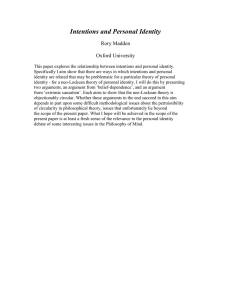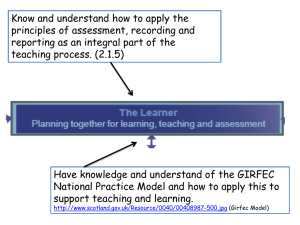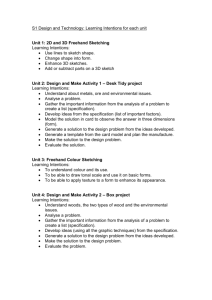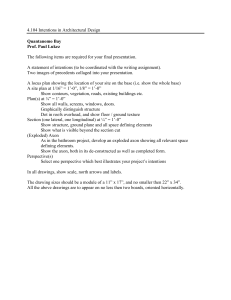AP Biology 12 Names:______________________ ______________________
advertisement
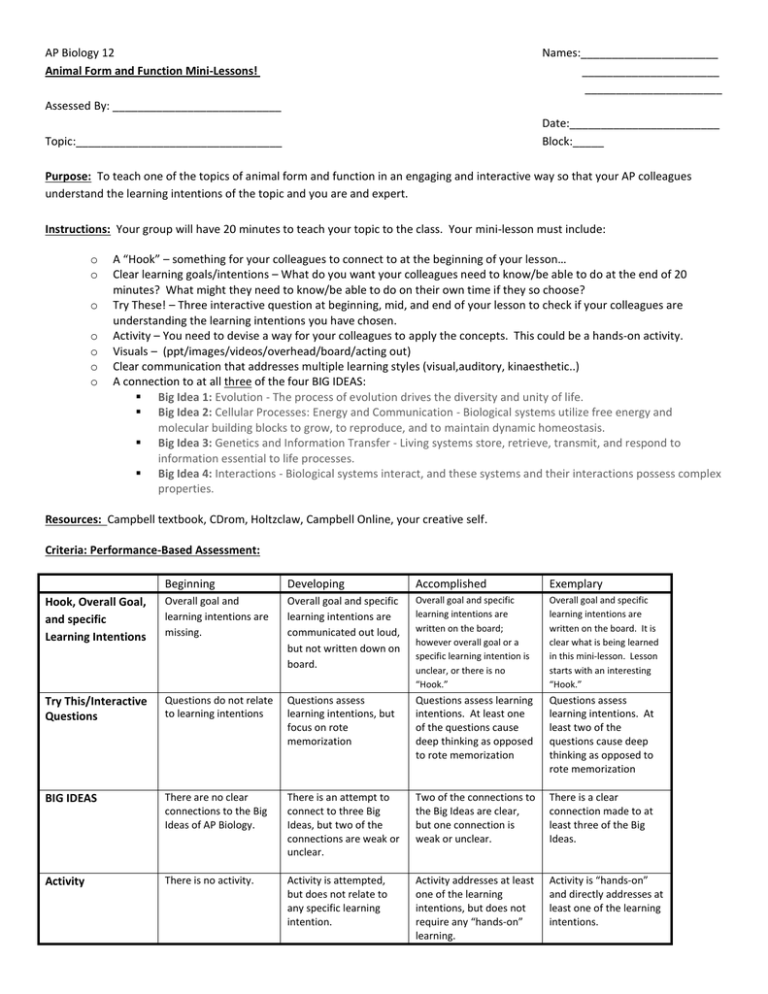
AP Biology 12 Animal Form and Function Mini-Lessons! Names:______________________ ______________________ ______________________ Assessed By: ___________________________ Date:________________________ Block:_____ Topic:_________________________________ Purpose: To teach one of the topics of animal form and function in an engaging and interactive way so that your AP colleagues understand the learning intentions of the topic and you are and expert. Instructions: Your group will have 20 minutes to teach your topic to the class. Your mini-lesson must include: o o o o o o o A “Hook” – something for your colleagues to connect to at the beginning of your lesson… Clear learning goals/intentions – What do you want your colleagues need to know/be able to do at the end of 20 minutes? What might they need to know/be able to do on their own time if they so choose? Try These! – Three interactive question at beginning, mid, and end of your lesson to check if your colleagues are understanding the learning intentions you have chosen. Activity – You need to devise a way for your colleagues to apply the concepts. This could be a hands-on activity. Visuals – (ppt/images/videos/overhead/board/acting out) Clear communication that addresses multiple learning styles (visual,auditory, kinaesthetic..) A connection to at all three of the four BIG IDEAS: Big Idea 1: Evolution - The process of evolution drives the diversity and unity of life. Big Idea 2: Cellular Processes: Energy and Communication - Biological systems utilize free energy and molecular building blocks to grow, to reproduce, and to maintain dynamic homeostasis. Big Idea 3: Genetics and Information Transfer - Living systems store, retrieve, transmit, and respond to information essential to life processes. Big Idea 4: Interactions - Biological systems interact, and these systems and their interactions possess complex properties. Resources: Campbell textbook, CDrom, Holtzclaw, Campbell Online, your creative self. Criteria: Performance-Based Assessment: Beginning Developing Accomplished Exemplary Hook, Overall Goal, and specific Learning Intentions Overall goal and learning intentions are missing. Overall goal and specific learning intentions are communicated out loud, but not written down on board. Overall goal and specific learning intentions are written on the board; however overall goal or a specific learning intention is unclear, or there is no “Hook.” Overall goal and specific learning intentions are written on the board. It is clear what is being learned in this mini-lesson. Lesson starts with an interesting “Hook.” Try This/Interactive Questions Questions do not relate to learning intentions Questions assess learning intentions, but focus on rote memorization Questions assess learning intentions. At least one of the questions cause deep thinking as opposed to rote memorization Questions assess learning intentions. At least two of the questions cause deep thinking as opposed to rote memorization BIG IDEAS There are no clear connections to the Big Ideas of AP Biology. There is an attempt to connect to three Big Ideas, but two of the connections are weak or unclear. Two of the connections to the Big Ideas are clear, but one connection is weak or unclear. There is a clear connection made to at least three of the Big Ideas. Activity There is no activity. Activity is attempted, but does not relate to any specific learning intention. Activity addresses at least one of the learning intentions, but does not require any “hands-on” learning. Activity is “hands-on” and directly addresses at least one of the learning intentions.

